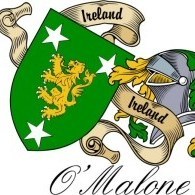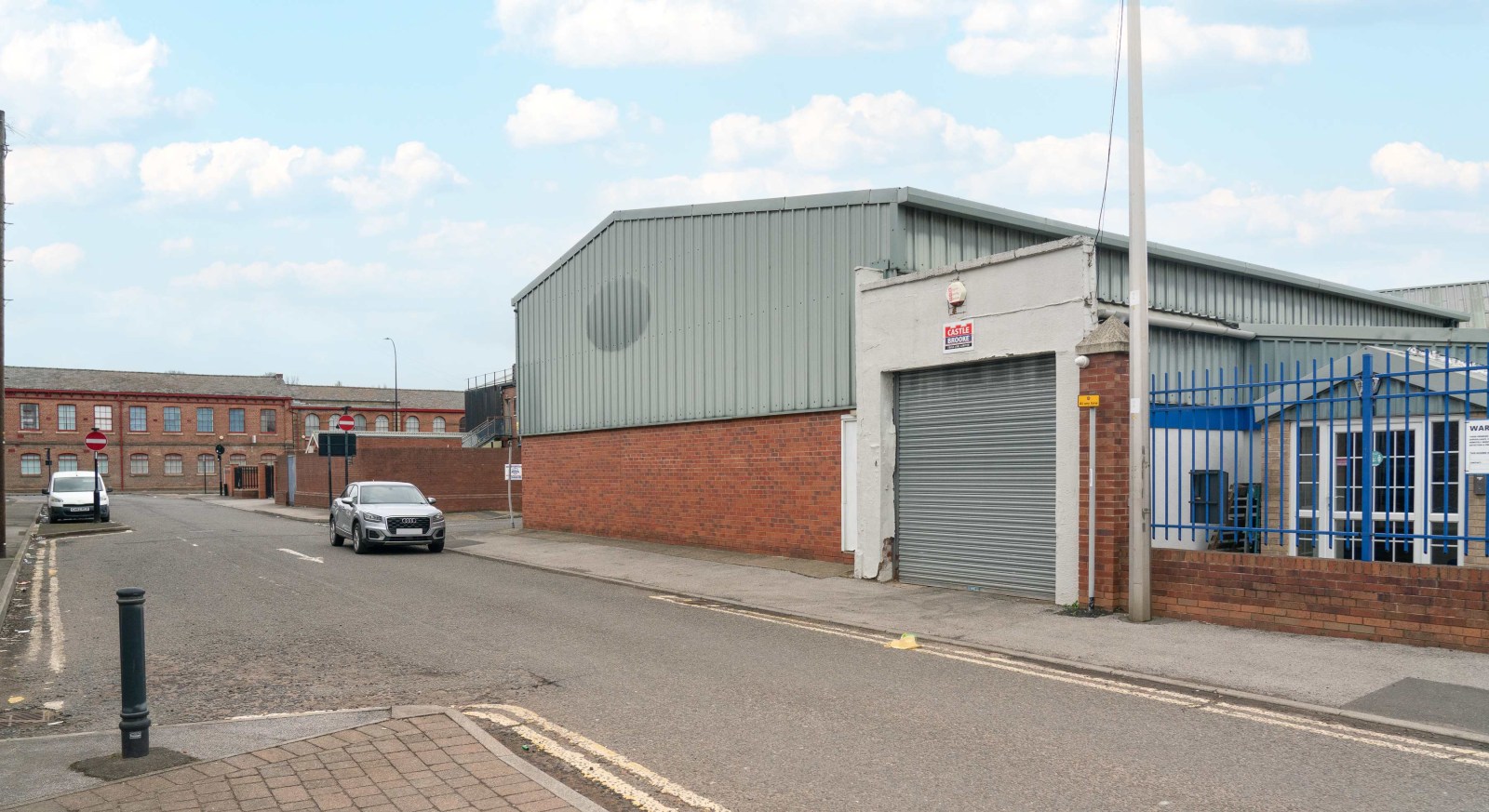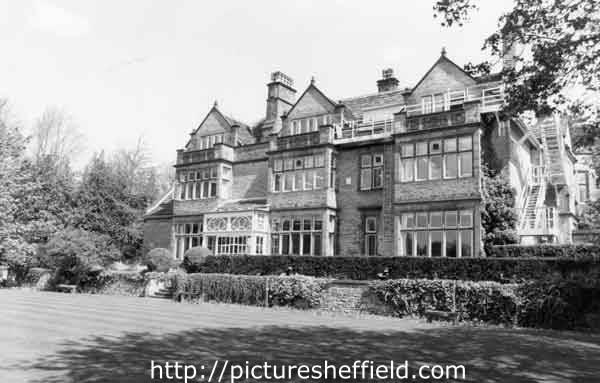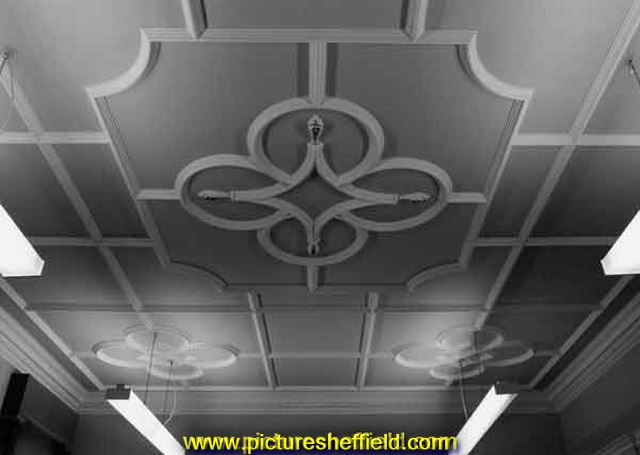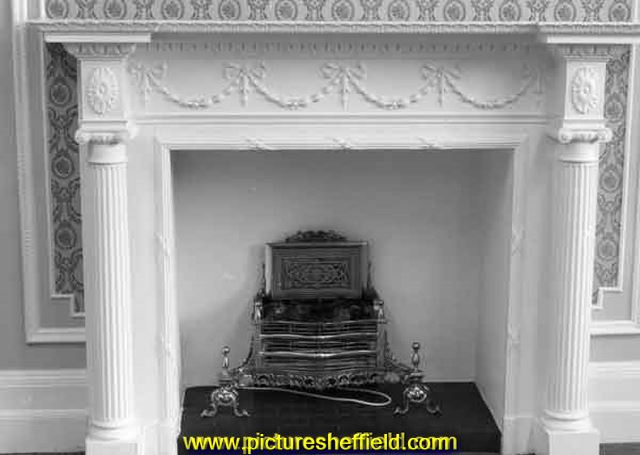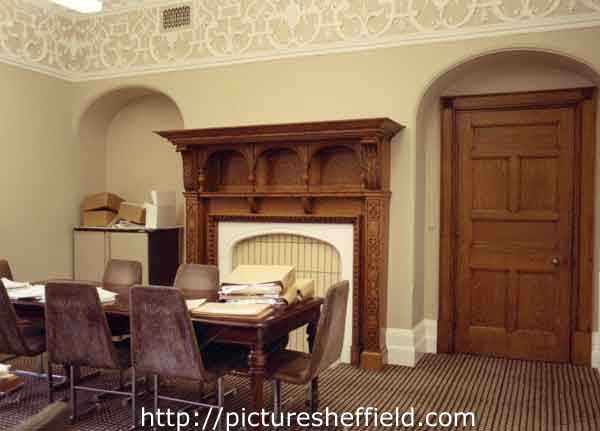Leaderboard
Popular Content
Showing content with the highest reputation on 02/04/23 in all areas
-
Firth Brown Photographic unit It may come as a surprise to some that, at one time, large companies had their own photographic departments – pre digital of course - and the Sheffield steel industry was no exception. Both English Steel (now Sheffield Forgemasters) and Firth Brown Ltd had their own photographers and printers. That at English Steel was headed up by one Alan Faulkner-Taylor and Firth Brown's by Stan Thorpe, later, by the very likeable Mr. Jack Dalton. Initially this unit was concerned with producing photo prints from the negatives made within the research laboratories via microscopy &c and were always under the jurisdiction of the Brown Firth Research labs. As the company grew, and many satellites added, then the need for a more comprehensive facility, allied to their publicity department's requirements, became obvious and thus the department grew into a full-blown studio, film making and colour printing set up. (see the Yorkshire film archive https://www.yfanefa.com/record/6573) There was a small well-equipped cinema in the old research labs building on Princes Street before the then new laboratory was built on Attercliffe Road (and opened by the chairman of Rolls Royce). At the time of writing,this building, in a rather sorry state, remains to let. Over the years a vast and priceless collection of photographs was built up which showed the steel making processes and their finished products. Moreover, the company produced it's own in-house magazine "Firth Brown News" which catered for the staff and also acted as a link with the company's customers. Many of the more important of these negatives and plates were, I believe, rescued by Kelham Island Industrial Museum but of the thousands available I guess they only retained a small proportion of the most historically important of these. The department was located off Norroy Street (between Princes Street and Saville Street) and was underground, which prevented any problems with daylight! Unlike the Firth Brown Medical Centre, on Carlise Street, which has been the subject of many Urban explorer videos which reside on YouTube, (and which, incidentally, had the company's small bore .22 rifle range above it - wonderful!) the photographic department was once a casualty clearing centre in the war and was a rabbit warren of rooms, part of which housed the research lab's creep laboratory as a separate entity. There was an escape hatch, replete with iron ladder in the cine editing suit which emerged in what was the director’s garage above! Access to the department was by a steeply sloping ramp, large enough to allow trucks to back down, so necessary when large items of lighting equipment had to be moved to filming and photography locations both in Sheffield and elsewhere. The latter included Firth Brown Tools, Firth Vickers Stainless Steels, Firth Brown Castings (Scunthorpe), Firth Derihon Stampings (which had a factory on Dunlop Street and later, next to the old tram sheds on Attercliffe Road and also at Darley Dale, this being a "shadow factory" in the war and hence out in Derbyshire, and which produced forgings for Rolls Royce for Spitfires &c), and Shepcote Lane Rolling Mills. Darley Dale plant is still operational, albeit under foreign ownership – surprise! When I joined the department in 1963, from Photofinishers at Nether Edge (see:https://www.sheffieldhistory.co.uk/forums/topic/15196-photo-finishers-sheffield-ltd-50-years-ago/#comment-129921) there were eight or nine working here. The large studio was custom designed for the photography of stainless steel products and painted all white with recessed lighting in the ceiling, the better to shoot cutlery and associated kitchenware produced from Firth Vickers's steels. The latter company also had a house magazine (curiously named "Enchiridion") which required our photographic content. One of the more onerous jobs – albeit fairly rare – was photography of accident scenes, which is no surprise when one looks at the shop floor employees on film displaying not a trace of PPE gear we are so used to seeing these days. Usually, we were called out early in the mornings when breakfast had not been thoroughly digested! The odd fingertip in a machine was tolerable but there were some really nasty ones. There were essentially four darkrooms, one for processing film and plates, one for making contact prints from the main research labs' microscopy and one for making enlargements: another for the colour processing. There was also a large room housing an impressive Barcro camera on rails, for copying material up to something like six by eight feet, which was backlit as well as having two trough lights. All this with the requisite huge stainless wash sinks, glazing machine and trimming table. As for equipment, this included some fine old Gandolfi plate cameras from half plate up to whole plate in size (8.5" x 6.5"), MPP 5" x 4" technical cameras, Rollieflex and Rolliecord film cameras. The cine department depended on Bolex 16mm cameras together with the necessary editing gear. The only out of house process was the professionally produced narration. The resultant films were a tribute to Reg Frost who specialized in this film making operation. A POW in the war he amusingly came up at work with the odd German exclamations learnt at the camp and which I can recall to this day. Sadly, he was, one day, found hanging half out of his VW Beetle, having suffered a fatal heart attack on the way to work. The magnificent main entrance area to the Firth Brown offices on Savile Street displayed 60"x40" colour transparencies, suitable mounted within custom made back lit cabinets (from the joiners' shop) and which were printed in the department. Notable too, was the beautifully panelled entrance hall at Firth Vickers, on Weedon Street, whole whole area now a sad cleared area. The centre of the works was bisected by the railway to the Wicker goods yard, but upon the latter’s demise, this was reinstated as a roadway. The modern Special Melted Products Ltd appears to remain the last survivor on site from those days of yesteryear. I worked there for 17 years and in 1980 when I left, the company was more or less finished, mainly as the result of a takeover by a man - who will remain nameless- who was regarded as an asset stripper, the "Old guard" having slowly left by degrees. This was perhaps expedited by a very serious accident in a newly completed electric melting shop, which resulted in rivers of liquid steel escaping and the resultant fire which quickly followed. It is probable that in some form this underground complex still exists because the old red sliding entrance doors have been replaced with a modern roller shutter type and what used to be the directors garage area round the corner both have a notice that the property belongs to Castle Brooke Tools (carbide). Moreover, around the corner on Saville Street is a blue doorway which used to be the entrance the handy Saville Street post office. Of the Lord Nelson pub on Norroy street, adjacent to the photo lab entrance, and watering hole for many a thirsty furnaceman, unsurprisingly not a trace remains!2 points
-
68 Clarkehouse Road & Aizelwood's Mill The short instruction cut into the gatepost of 68 Clarkehouse Road was no doubt for the tradesmen but the house itself was the home of Corn miller, John Aizelwood of the Aizlewood Corn Mill on Nursery Street, Aizlewood's Mill also known as Provender Mill was allegedly built in 1861 on the site of the former nursery gardens of Sheffield Castle and alongside Sheffield's first railway, the Manchester, Sheffield and Lincolnshire which carried grain from the cornfields of Lincolnshire, Sheffield's first railway station was adjacent to Aizlewood's Mill's original car park. In the 1862 directory Aizelwood`s are listed as such “Aizlewood (John), and Widdison (Wm.), corn millers, Masbro' street” and the only corn miller on Nursery Street was Parke & Moore at 35, no mention of Aizlewoods at all, Aizlewood's Mill was one of the first mills in Britain to use the iron roller reduction method of milling. The grain would be carried across a bridge from the railway goods yard into the top floor of the building before descending by gravity though the various milling processes. The building is a particularly fine example of the prestige buildings of the period with cast iron columns supporting heavy timber beams to provide a framework for a substantial brick building with many attractive architectural features. The project was carried out for John Aizlewood, a Rotherham miller, who went on to become one of Sheffield's most significant businessmen and citizens. The mill remained under the control of the Aizlewood family until 1962 when the business was sold to Associated British Foods. In 1969 the milling machinery was removed and the building was sold to Harrogate-based farmers and food merchants, George Morrell & Sons Ltd. (Morrells Peas?) This is a memory of one man who worked at the mill before it close, I quote “I used to work at Aizlewood`s. It wasn't just a flour mill it produced all sorts of animal feeds too. The flaked maize was just like corn flakes. Moths were a bugbear. they built nests in the wooden chutes where the ground wheat and flour used to flow and periodically block them. It was like grey cotton wool and everything taken out was put back in to be ground. I remember when I first started a chap was showing me round and in this one machine with a glass side I could see lovely twinkly things slowly rising up. They were in fact moth wings, you could grind the moths but the wings were removed by a warm updraft of air. I never ate bread for years.” Early 17th-century Sheffield still had many links with its medieval self. One of these was the town mill and bakehouse where inhabitants were obliged to come to have their wheat ground and bread baked under threat of punishment; in 1601 Thomas Shawe was fined 12d and William Dickenson 3s 4d for not baking their bread here. Records for 1638 tell us that the mill was in the hands of Thomas Revell but, after his death in July of the same year, his widow, Mary, inherited the lease. She continued to pay rent until the early 1650s, when she appears to have moved elsewhere Kelham Island is now famous for its brewery and industrial museum, but in the 17th century it was a small island outside the town, formed through the creation of a mill race to feed the town's corn mill downstream. The reason for its development is the man after whom it was named; Kellam Homer. Whilst we know little else about him, his close relative also called Kellam. The spelling of the island appears to have changed in the early 19th century, although even when he was alive Kellam was often written as Kenhelm, the proper spelling of the name. The first time we get a record of a mill on Kelham Island is in1609, in the records of Sheffield's manorial court, also known as Sheffield Court Leet. Kellam Homer's mill had evidently been preventing water reaching the town's corn mill; he was ordered to make sure enough water reached this building or pay a fine of 10 shillings. Homer's water-driven mill was for grinding and polishing cutlery, evidence of how widespread the trade was throughout the town, but at this time the piece of land was not known as Kelham Island, but Colston Croft. In 1864 John (Aizlewood was living at 7 Talbot Place and eleven years later he had moved to a better house befitting his wealth at 48 Norfolk Road, his business must have been doing really well as by 1879 he’s living at 68 Clarkehouse Road, today’s subject, during his life he was a town councillor for 15 years up to his death on the 8th of August 1907, his son John William died at his home at 3 Brocco Bank on the 28th of December 1929. There were many corn mills scattered about Sheffield, Shude Hill, Blast Lane, Solly Street, Broomhall, Royds Mill, the name gives a clue to what was happening there, in 1839 in Pond Street a certain Miller called Joshua Wigfall was carrying out his business and his son Joseph is also registered as a miller but he’s also got a listing as Miller, Maltster, Corndealer and inventor of instruments for conveying sound to the deaf, anybody any idea what this was? The short street just off Pond Street, called Bakers Hill, its name gives a clue as to what was here a couple of hundred years ago, it was the towns bakery where women took their bread for baking. The clues to what was being made in certain areas is in the name it has today. .1 point
-
Snaithing Grange, Snaithing Lane Ranmoor. Built 1897-1904, by Sir Samuel Osborn, steel maker and engineering tool manufacturer. s37774 Images from May 1989 more Images on Picture Sheffield Website. s33539 s33526 s33536 s37800 Link to Estate Agents Brochure: https://www.bpestates.co.uk/buy/snaithing_grange/ Also more internal images: https://www.examinerlive.co.uk/news/property/gallery/take-look-inside-most-expensive-264024941 point


